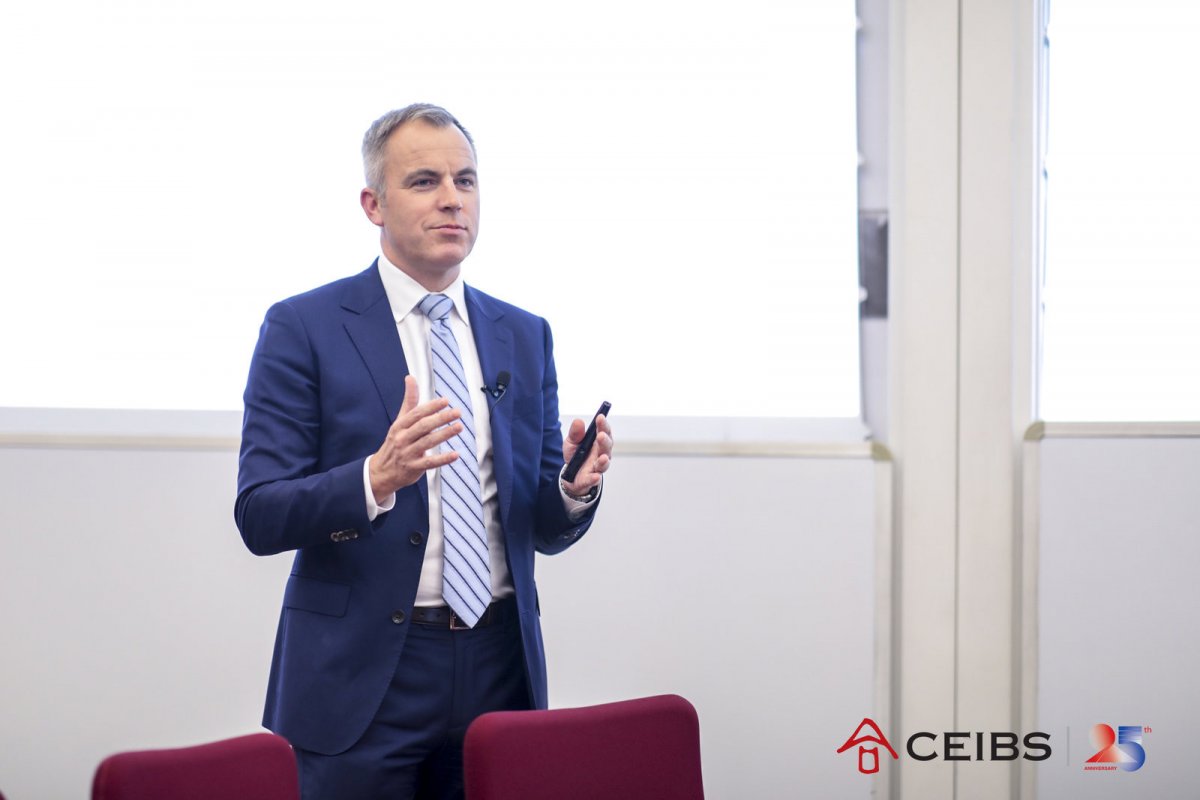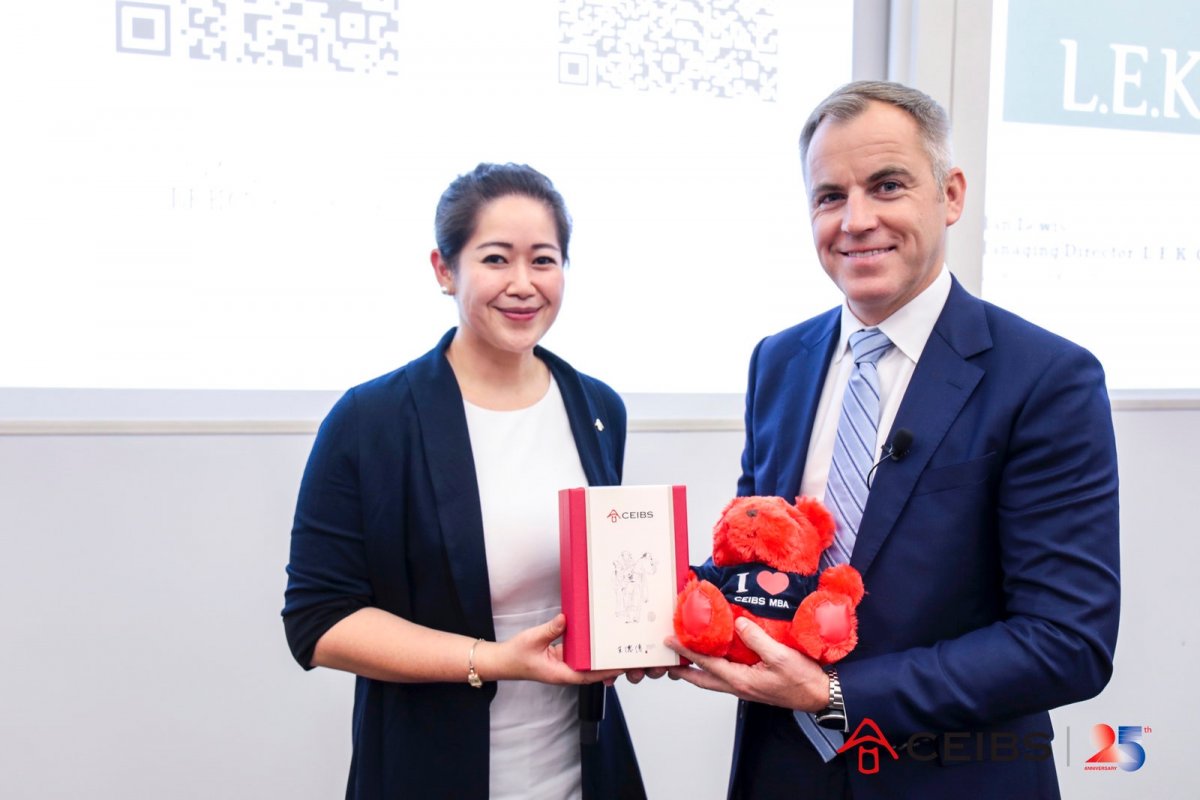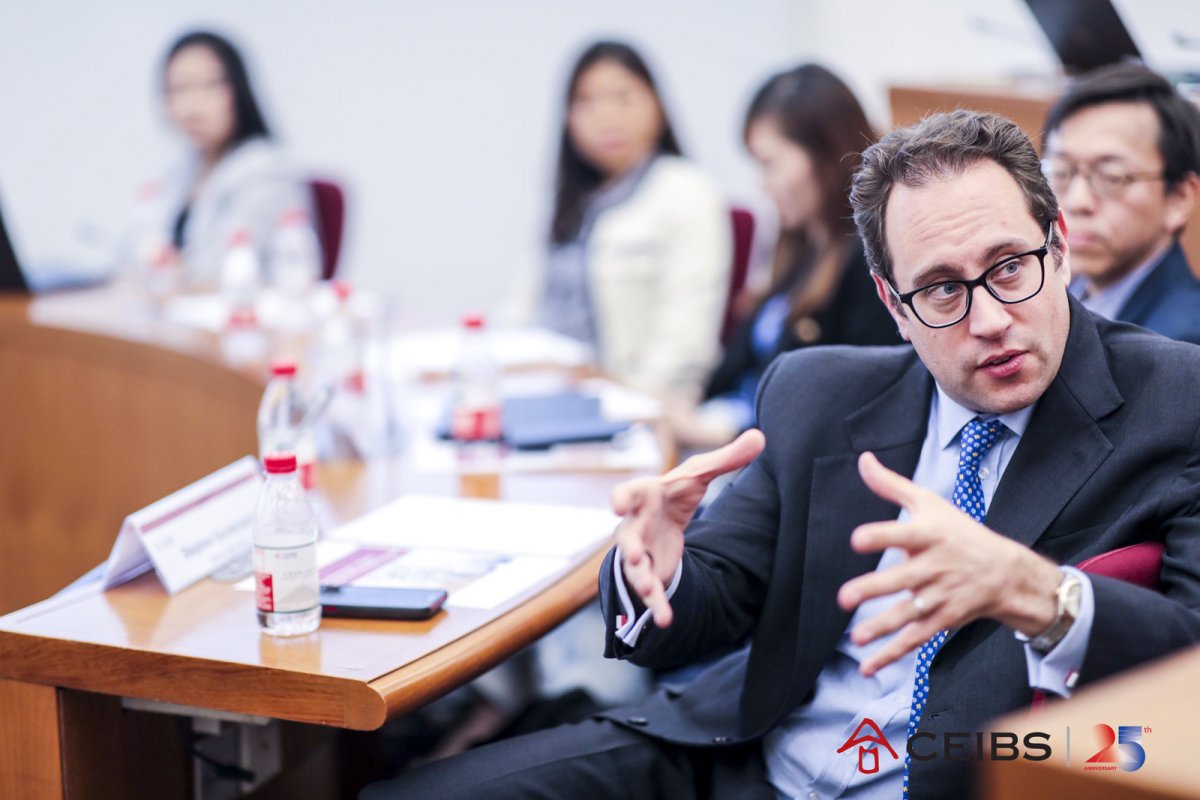Golden Growth Opportunities Hiding in Plain Sight, CEIBS Executive Forum Hears
November 4, 2019. Shanghai – Traditional business growth strategies offer odds “no better than a casino” for success and better opportunities are hiding in plain sight, delegates heard at a CEIBS Executive Forum earlier tonight.
Alan Lewis, Managing Director at LEK Consulting and co-author of Edge Strategy: A New Mindset for Profitable Growth, told a packed room of around 80 guests that many conventional business expansion methods ended in failure.
“When we look at the performance of these types of growth options we find that the odds of success are not what you expect them to be – at best 50/50, and even worse in certain sectors,” said Mr. Lewis.
LEK carried out research into the expansion projects of S&P 500 companies from 2014-16. The results showed that, typically, launching new products had only a 50% success rate, international expansion had a negative return on investment after five years, new technology investments yielded average losses of 56%, and mergers and acquisition destroyed value in 60% of cases.
Mr. Lewis explained that growth efforts failed in many cases as companies were overly-optimistic about their own capabilities and in their assessments of target markets.
“For example, investing in new technology, in big systems, to make companies more efficient and effective, often takes longer, costs more than they expect, and yields lower returns than they dreamed of at the beginning,” Mr. Lewis said.
Instead, Mr. Lewis argued that companies should focus on seizing opportunities using what he terms an Edge Strategy mind-set – a concept which focuses on growing at the boundaries of a company’s core business, rather than establishing entirely new areas of operation. Edge Strategy looks to question executives’ perceptions of what is core to their business and what is beyond the core – and where the boundary between these two lies, Mr. Lewis explained.
He added there was a tendency in business to give too much credence to market definitions. “The reality is that life isn’t that simple – there isn’t a sharp line around what we do today and what we do tomorrow, it’s actually a very blurred one,” he said, adding, “What we define as our core business versus what is outside that is arbitrary – we have made these choices.”
“A lack of clarity around the edge of the core business is a huge opportunity for incremental growth,” said Mr. Lewis.
Mr. Lewis gave an example of “edge thinking” in a fruit and vegetable store, which would traditionally sell whole fruits to customers looking to take such products home to eat later. But by changing the “mission” of the fruit store, from selling whole fruits for later consumption, to selling ready-made instant snacks of prepared fruit, the business could sell smaller amounts of fruit for a higher mark-up.
He gave similar examples of airlines offering more legroom for increased ticket prices, and of crop seed companies offering crop management data services.
Mr. Lewis explained that one of the key advantages of Edge Strategy is that it focuses on leveraging existing customer bases which have already been won, and does not depend on winning over other companies’ customers, if carried out successfully.
He added that being able to change your perception of customer desires is also an important factor.
“Edge strategy focuses on a very simple concept that all of our customers are not the same – the idea that all our customers are the same is quite silly when you think about it,” said Mr. Lewis, adding, “Yet many companies are designed for a market trying to force their customers to all behave the same.”
Customers may also have different levels of satisfaction with the product or service purchased – some may be willing to pay more for a higher level of service or a related product they had not imagined they may need.
To identify what existing customers may want, Edge Strategy asks three questions. First, recalibrating existing paid options around a core offering to appeal to a specific subset of customers. Second, asking what “mission” a customer is hoping to achieve with a product and would they accept more help to achieve this. And thirdly, who, with the exception of a direct competitor, would be willing to pay for the rights to the company’s assets or data?
Mr. Lewis gave some practical examples of companies putting the theory into practice. He cited cruise lines upselling basic room and board deals to packages which were fully inclusive of board activities, shows and all you can eat dining, as an example of recognising all customers were not the same. He said CAT, the heavy equipment manufacturer, used sensors on its trucks and bulldozers to collect user data which was used to improve the efficiency and performance of the machines, thereby building a database of information which could be sold back to customers.
The beauty of the above strategies were the lack of risk or need for substantial investment when customers have already been won. “Acquisition costs for that customer have already been spent, so there’s less risk or spending little or no money up front,” he said, adding, “There’s also a higher probability of success as we are working in our own market – the risk we misunderstand this market is gone.”
For details about other upcoming Executive Forums and other CEIBS events, please visit our events page here.
























